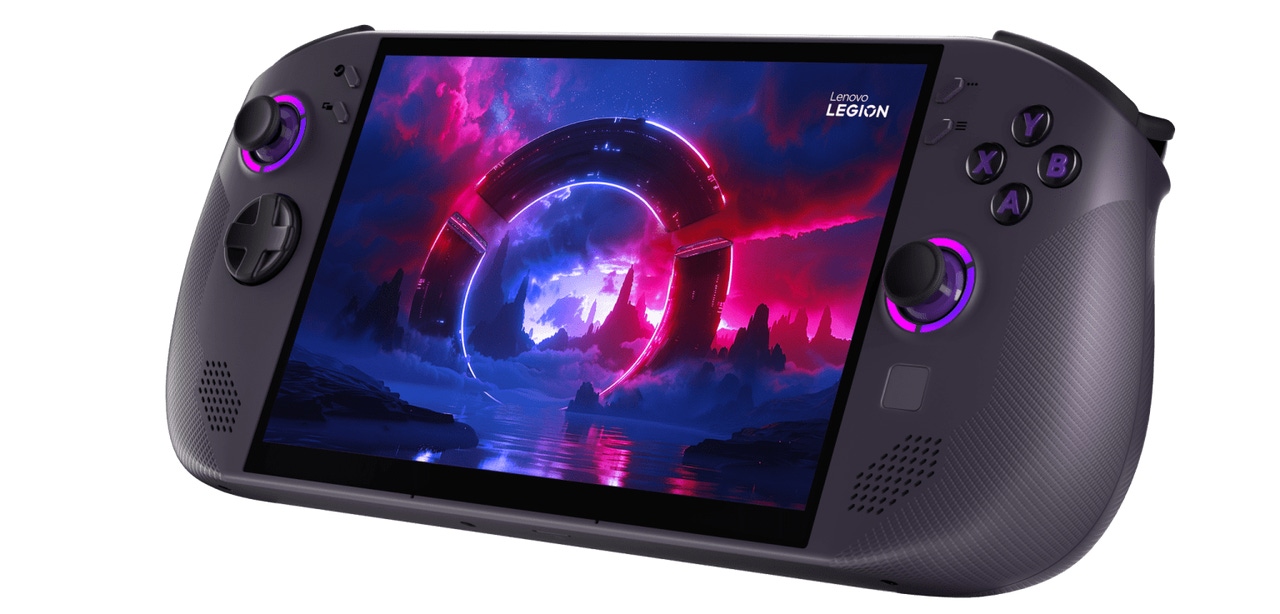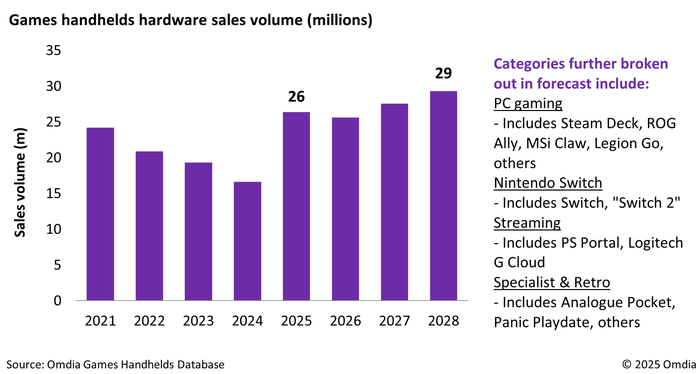Trending
Opinion: How will Project 2025 impact game developers?
The Heritage Foundation's manifesto for the possible next administration could do great harm to many, including large portions of the game development community.

Featured Blog | This community-written post highlights the best of what the game industry has to offer. Read more like it on the Game Developer Blogs or learn how to Submit Your Own Blog Post
Valve’s collaboration with hardware manufacturers and chipset makers strengthens SteamOS’s position in the PC gaming handheld space.

At CES 2025, Lenovo refreshed its Lenovo Legion Go lineup of PC gaming handhelds. Among the new devices is the Legion Go S powered by SteamOS, the first ever third-party device to ship with Valve’s operating system. Valve’s collaboration with hardware manufacturers and chipset makers strengthens SteamOS’s position in the PC gaming handheld space.
Valve’s Steam Deck took much of what defines PC gaming – mouse and keyboard support, configurability, users’ Steam libraries – and distilled them into a portable device. Since then, a new product category of PC has been established: the PC gaming handheld.
Since Steam Deck’s launch in early 2022, major PC manufacturers Asus, Lenovo, Acer, Zotac and MSI have joined the market with their own devices. Despite this, SteamOS, Valve’s Linux-based operating system optimized for handheld gaming, remained off-limits to third-party manufacturers.
This led to a situation where emerging PC gaming handhelds, such as Asus’s ROG Ally and the first-generation Lenovo Legion Go, had to adopt Windows 11. While Windows has a rich history as a games platform, its one-size-fits-all approach means it is primarily designed to cater to mouse and keyboard users on desktop PCs and laptops, as well as a plethora of use cases unrelated to gaming.
Furthermore, licensing fees associated with shipping Windows have hindered manufacturers’ ability to compete with Steam Deck on price. Unlike Valve, PC hardware manufacturers do not own the underlying software ecosystem, mandating hardware profitability.
Lenovo’s introduction of a SteamOS-powered version of the its Legion Go S handheld changes this dynamic as PC manufacturers can now create and sell hardware that differentiates from Steam Deck without losing that device’s user-friendliness.
Indeed, the SteamOS-powered Legion Go S does just this. Its screen offers faster refresh rates than any Steam Deck model, while also supporting Variable Refresh Rate (VRR) technology, overriding users’ need to manually configure the refresh rate of the display.
The AMD Z2 Go APU powering the device has enabled Lenovo to hit a competitive starting price of $500—$100 cheaper than the Windows model. While this APU has origins dating back to 2022, Omdia’s own testing of comparable hardware suggests Lenovo will be offering performance and battery life broadly similar to, or better than, both Steam Deck models.
Figure 1: Annual handheld sales volumes set to grow significantly in 2025

Source: Omdia Games Handhelds Database
Steam Deck continues to be sold to engaged Steam users primarily via the Steam storefront. This made sense during the device’s 2022 launch window while the software compatibility situation remained patchy (Valve uses a translation layer, Proton, to enable Windows games to run on SteamOS).
Those days have long passed. In December 2024, over 17,000 Steam games were categorized as “Deck Verified” or “Playable”, compared with just over 1,000 in March 2022. SteamOS also provides extensive controller configuration to ensure games designed for a multitude of input devices – controllers, mice, trackpads – “just work”. In short, SteamOS has long been ready to expand beyond the confines of Valve’s limited distribution network and retail presence.
This is where PC manufacturers such as Lenovo come in. They have already set up extensive global distribution networks that will enable their SteamOS-powered devices to penetrate territories where Steam Deck is not available, such as India and China.
PC manufacturers’ longstanding relationships with retailers and telcos will also facilitate hardware bundles and hands-on opportunities – vital if Valve wishes to broaden its target market during 4Q, the quarter where over 40% of annual console hardware sales are typically made.
Ensuring SteamOS is available on more handhelds will help Valve cement its central role of the Steam distribution platform in the PC handhelds market, where Steam Deck remains the leading device. Omdia’s Games Handhelds Database reveals that by the end of 2024, Windows-powered PC gaming handhelds accounted for over a fifth of the overall installed base.
This will also become increasingly important when considering Microsoft’s future plans for Windows. Today, Windows’ poor user experience on handhelds hampers the extended engagement with PC games that the complementary handheld category facilitates.
While Microsoft plans to improve this by implementing an Xbox-like user interface, the risk to Valve then becomes the primary positioning of competing services like PC Game Pass – a threat to spend and engagement on Steam.
It is clear SteamOS’s foray on to third-party devices will not be a repeat of 2015’s unsuccessful Steam Machines. The focus on handhelds makes Valve’s operating system additive rather than reductive. Valve has also established a strong presence with its own first-party hardware, providing a clear template for PC manufacturers to follow. Lenovo’s SteamOS-powered Legion Go S will help Valve to improve its position ahead of likely improvements in the Windows handheld experience.
You May Also Like